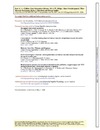Identificador persistente para citar o vincular este elemento:
https://accedacris.ulpgc.es/jspui/handle/10553/6589
| Campo DC | Valor | idioma |
|---|---|---|
| dc.contributor.author | Calbet, Jose A. L. | - |
| dc.contributor.author | González-Alonso, J. | - |
| dc.contributor.author | Helge, J. | - |
| dc.contributor.author | Sondergaard, H. | - |
| dc.contributor.author | Munch-Andersen, Thor | - |
| dc.contributor.author | Boushel, R. | - |
| dc.contributor.author | Saltin, Bengt | - |
| dc.contributor.other | Helge, Jorn | |
| dc.contributor.other | Calbet, Jose A | |
| dc.date.accessioned | 2011-11-03T02:31:00Z | - |
| dc.date.accessioned | 2018-03-08T09:04:10Z | - |
| dc.date.available | 2011-11-03T09:15:09Z | - |
| dc.date.available | 2018-03-08T09:04:10Z | - |
| dc.date.issued | 2007 | - |
| dc.identifier.issn | 8750-7587 | |
| dc.identifier.uri | https://accedacris.ulpgc.es/handle/10553/6589 | - |
| dc.description.abstract | To determine central and peripheral hemodynamic responses to upright leg cycling exercise, nine physically active men underwent measurements of arterial blood pressure and gases, as well as femoral and subclavian vein blood flows and gases during incremental exercise to exhaustion (Wmax). Cardiac output (CO) and leg blood flow (BF) increased in parallel with exercise intensity. In contrast, arm BF remained at 0.8 l/min during submaximal exercise, increasing to 1.2 +/- 0.2 l/min at maximal exercise (P < 0.05) when arm O(2) extraction reached 73 +/- 3%. The leg received a greater percentage of the CO with exercise intensity, reaching a value close to 70% at 64% of Wmax, which was maintained until exhaustion. The percentage of CO perfusing the trunk decreased with exercise intensity to 21% at Wmax, i.e., to approximately 5.5 l/min. For a given local Vo(2), leg vascular conductance (VC) was five- to sixfold higher than arm VC, despite marked hemoglobin deoxygenation in the subclavian vein. At peak exercise, arm VC was not significantly different than at rest. Leg Vo(2) represented approximately 84% of the whole body Vo(2) at intensities ranging from 38 to 100% of Wmax. Arm Vo(2) contributed between 7 and 10% to the whole body Vo(2). From 20 to 100% of Wmax, the trunk Vo(2) (including the gluteus muscles) represented between 14 and 15% of the whole body Vo(2). In summary, vasoconstrictor signals efficiently oppose the vasodilatory metabolites in the arms, suggesting that during whole body exercise in the upright position blood flow is differentially regulated in the upper and lower extremities. | es |
| dc.language | eng | es |
| dc.relation.ispartof | Journal of Applied Physiology | es-ES |
| dc.source | Journal Of Applied Physiology[ISSN 8750-7587],v. 103 (3), p. 969-978 | es |
| dc.subject | 241106 Fisiología del ejercicio | es |
| dc.subject.other | Cardiac output | es |
| dc.subject.other | Ergometry | es |
| dc.subject.other | Exercise | es |
| dc.subject.other | Human | es |
| dc.subject.other | Blood flow | es |
| dc.title | Cardiac output and leg and arm blood flow during incremental exercise to exhaustion on the cycle ergometer | es |
| dc.type | info:eu-repo/semantics/Article | es |
| dc.type | info:eu-repo/semantics/Article | es |
| dc.type | Article | es |
| dc.identifier.doi | 10.1152/japplphysiol.01281.2006 | |
| dc.identifier.scopus | 34548401590 | - |
| dc.identifier.isi | 000249054700033 | |
| dcterms.isPartOf | Journal Of Applied Physiology | |
| dcterms.source | Journal Of Applied Physiology[ISSN 8750-7587],v. 103 (3), p. 969-978 | |
| dc.contributor.authorscopusid | 7004323423 | |
| dc.contributor.authorscopusid | 7004397216 | |
| dc.contributor.authorscopusid | 20334409300 | |
| dc.contributor.authorscopusid | 36958968500 | |
| dc.contributor.authorscopusid | 20735070800 | |
| dc.contributor.authorscopusid | 23033026000 | |
| dc.contributor.authorscopusid | 7103099936 | |
| dc.identifier.crisid | 475;-;-;-;-;-;- | - |
| dc.description.lastpage | 978 | |
| dc.description.firstpage | 969 | |
| dc.relation.volume | 103 | |
| dc.investigacion | Ciencias de la Salud | es |
| dc.rights.accessrights | info:eu-repo/semantics/openAccess | es |
| dc.type2 | Artículo | es |
| dc.identifier.wos | WOS:000249054700033 | - |
| dc.contributor.daisngid | 90295 | |
| dc.contributor.daisngid | 1505301 | |
| dc.contributor.daisngid | 9620399 | |
| dc.contributor.daisngid | 147585 | |
| dc.contributor.daisngid | 1592176 | |
| dc.contributor.daisngid | 3384687 | |
| dc.contributor.daisngid | 220476 | |
| dc.contributor.daisngid | 13919 | |
| dc.identifier.investigatorRID | I-7096-2012 | |
| dc.identifier.investigatorRID | H-6693-2015 | |
| dc.contributor.wosstandard | WOS:Calbet, JAL | |
| dc.contributor.wosstandard | WOS:Gonzalez-Alonso, J | |
| dc.contributor.wosstandard | WOS:Helge, JW | |
| dc.contributor.wosstandard | WOS:Sondergaard, H | |
| dc.contributor.wosstandard | WOS:Munch-Andersen, T | |
| dc.contributor.wosstandard | WOS:Boushel, R | |
| dc.contributor.wosstandard | WOS:Saltin, B | |
| dc.date.coverdate | Septiembre 2007 | |
| dc.identifier.ulpgc | Sí | es |
| dc.description.jcr | 3,632 | |
| dc.description.jcrq | Q1 | |
| dc.description.scie | SCIE | |
| item.fulltext | Con texto completo | - |
| item.grantfulltext | open | - |
| crisitem.author.dept | GIR IUIBS: Rendimiento humano, ejercicio físico y salud | - |
| crisitem.author.dept | IU de Investigaciones Biomédicas y Sanitarias | - |
| crisitem.author.dept | Departamento de Educación Física | - |
| crisitem.author.orcid | 0000-0002-9215-6234 | - |
| crisitem.author.parentorg | IU de Investigaciones Biomédicas y Sanitarias | - |
| crisitem.author.fullName | López Calbet, José Antonio | - |
| Colección: | Artículos | |
Vista resumida
Citas SCOPUSTM
147
actualizado el 08-jun-2025
Citas de WEB OF SCIENCETM
Citations
145
actualizado el 12-ene-2026
Visitas
50
actualizado el 11-ene-2026
Descargas
379
actualizado el 11-ene-2026
Google ScholarTM
Verifica
Altmetric
Comparte
Exporta metadatos
Este elemento está sujeto a una licencia Licencia Creative Commons

